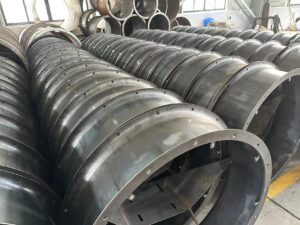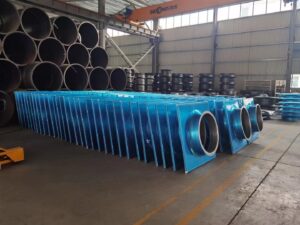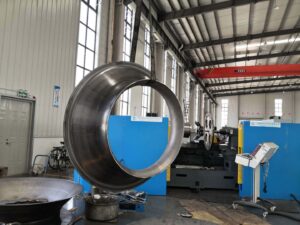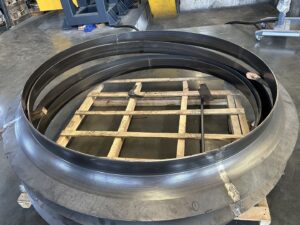HVAC (Heating, Ventilation, Air Conditioning)
Get a factory price — Start from Low MOQ
Fans, Blowers & Related Heating Systems Parts, Ventilation System Parts, Air Conditioning Parts, Cones, Shrouds, Fans, Blowers, Housings, Hoods, Vents, Covers, Guards, Flanges, Bellmouths, End Caps, Dampers, Couplers, Reducers.
The spinning process is a technology that employs one or several rollers to exert pressure on a metal blank (such as a circular plate, seamless or welded tube, or cone blank) while it rotates. This process applies a unit pressure of 25 to 35 MPa, causing the metal to undergo plastic deformation. Gradually, this results in the formation of hollow, thin-walled, rotary body parts in the desired shape and size. The spinning process encompasses various forming techniques, including extrusion, drawing, rolling, and bending.
When it comes to forming ventilation parts, the spinning process offers four main advantages:
- Simple tooling requirements. Generally, only a basic mold is needed. The material for the mold is inexpensive, often made from standard cast iron or assembled using sheet material. This simplicity in tooling translates to lower production costs. (In contrast, stamping and drawing processes typically require at least one set of die steel, and sometimes multiple sets of concave and convex dies.)
- Enhanced mechanical strength of the material post-spinning. This improvement allows for the creation of parts with thinner walls, leading to material savings.
- Ability to produce seamless parts that boast an attractive appearance without the need for welding.
- Spinning equipment is lightweight and energy-efficient, yet capable of processing large parts, offering a high cost-performance ratio.




